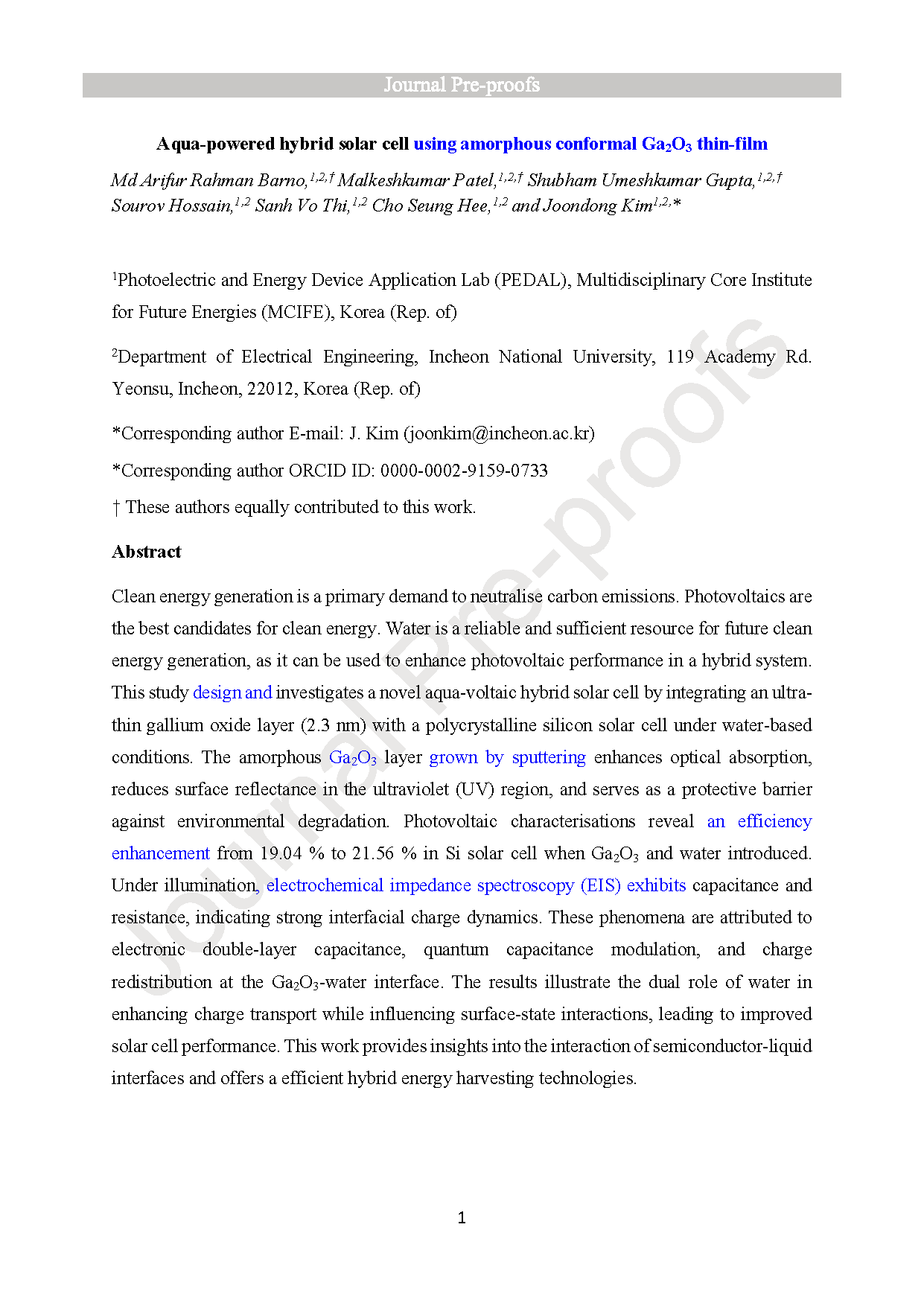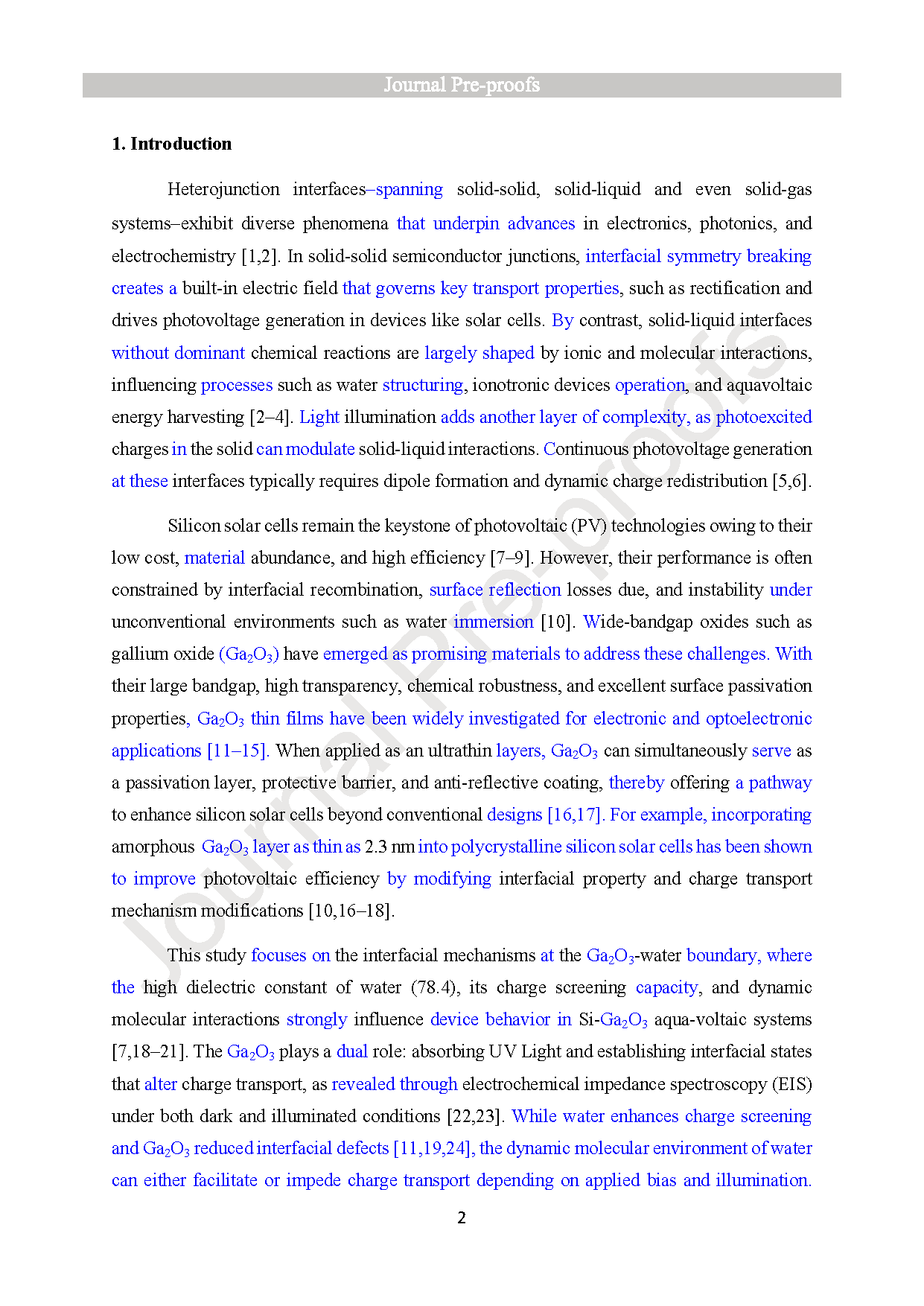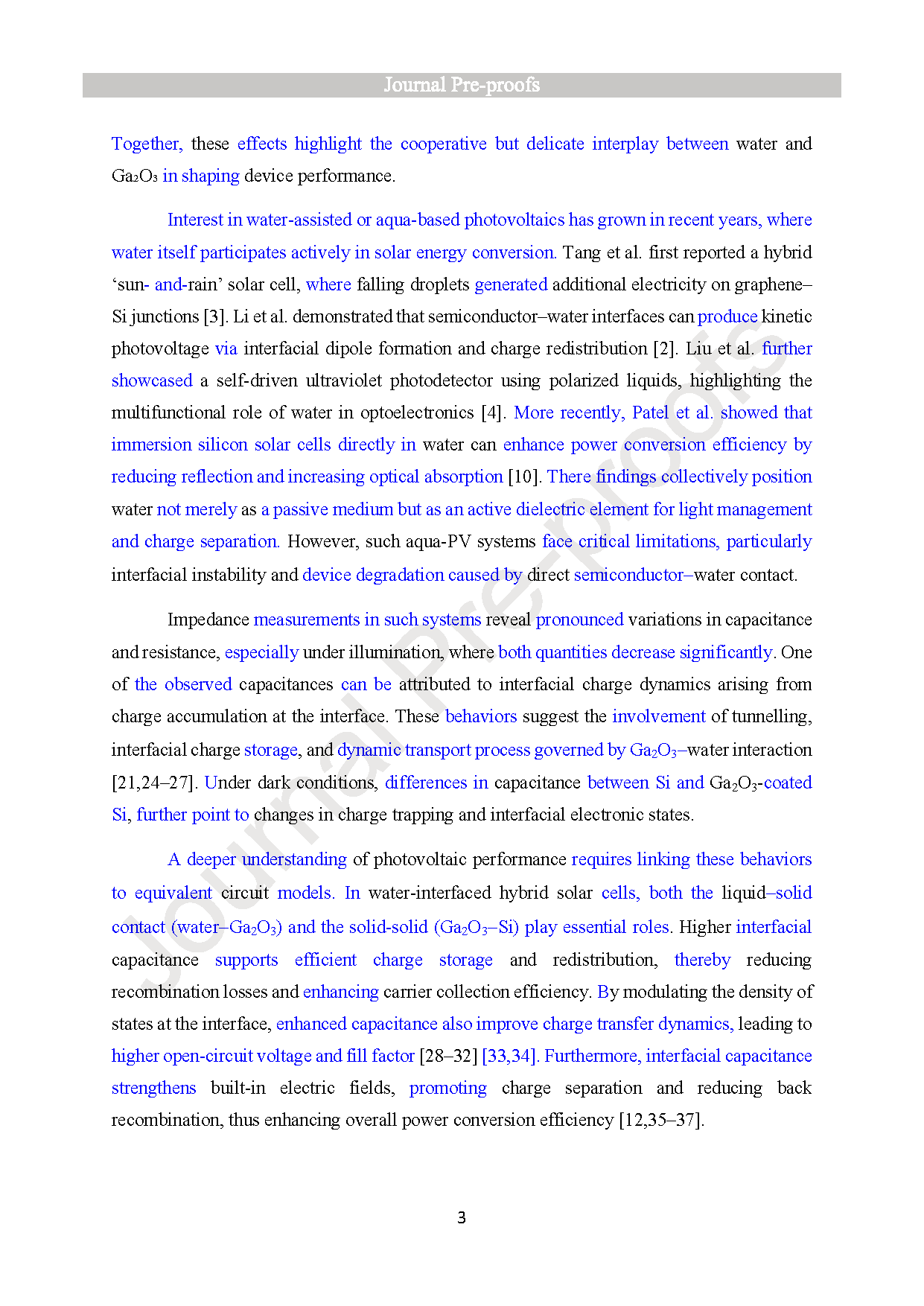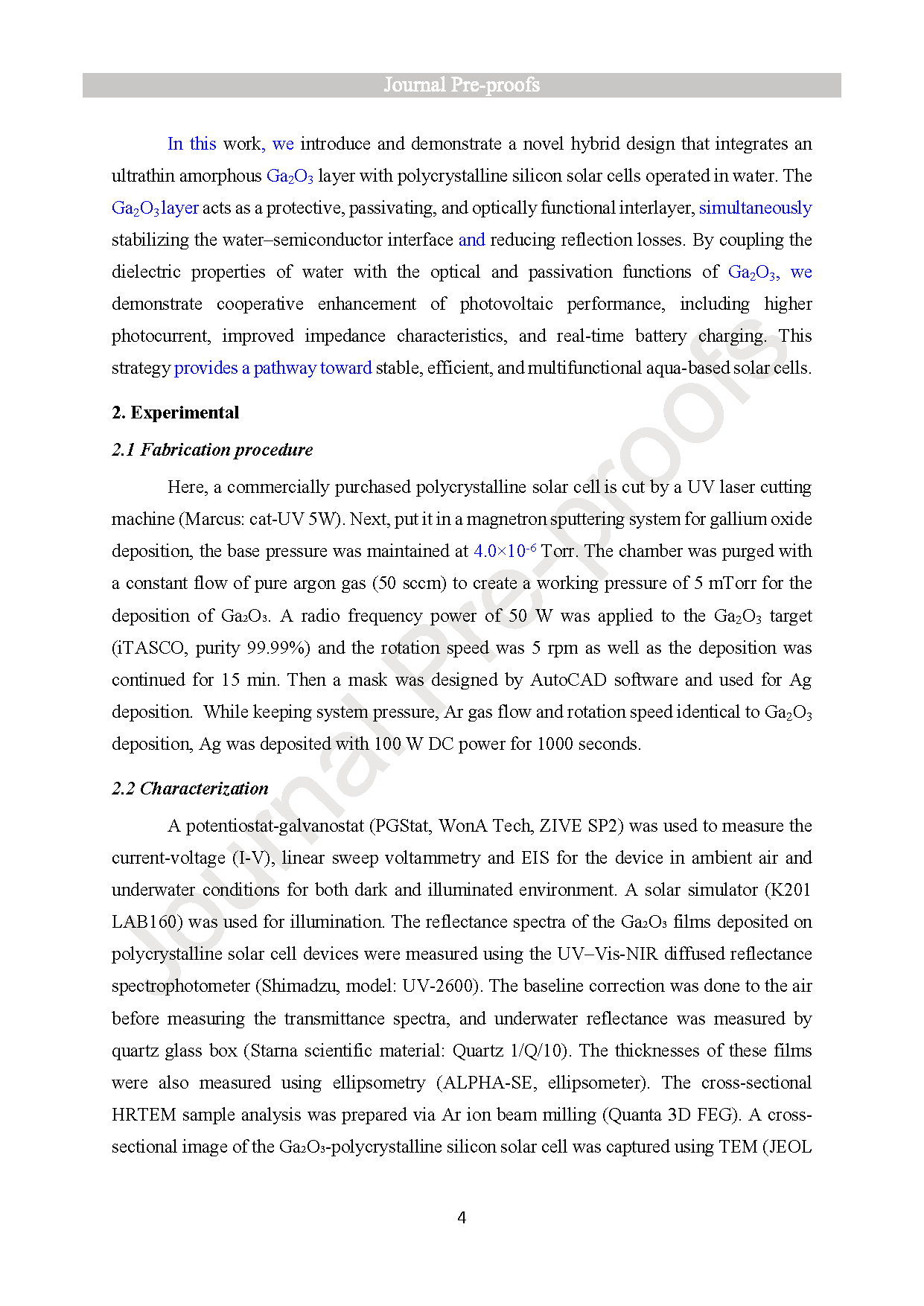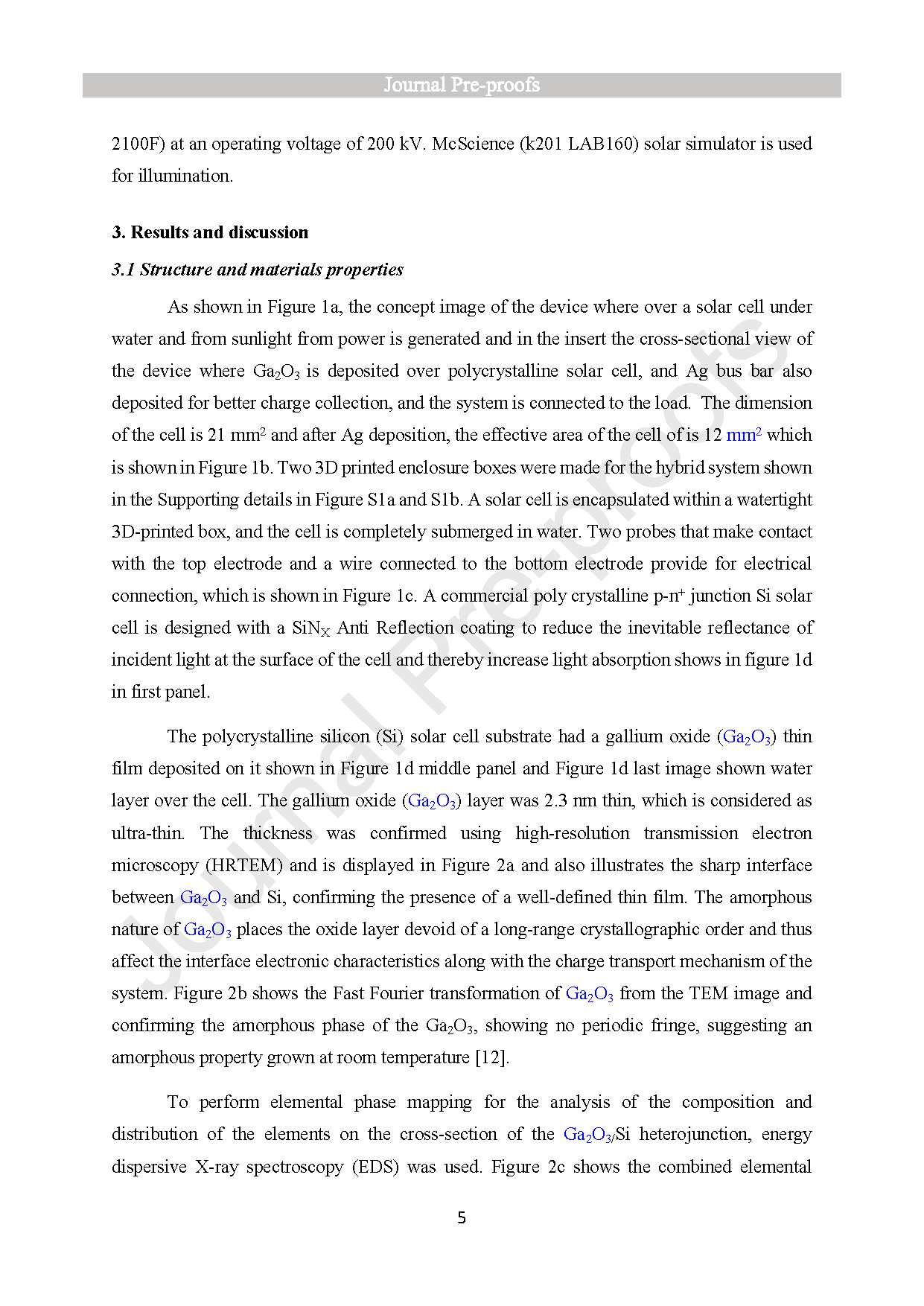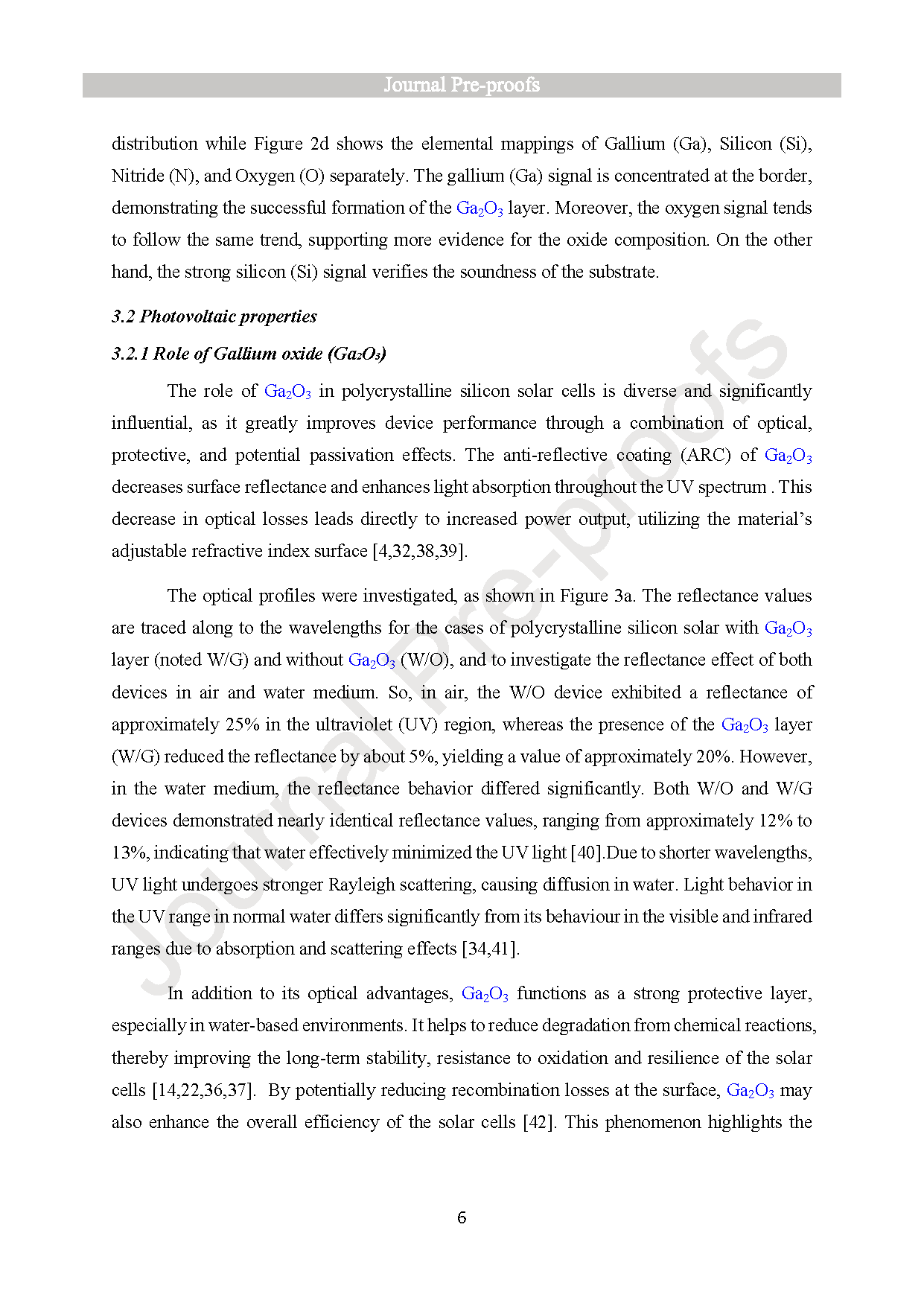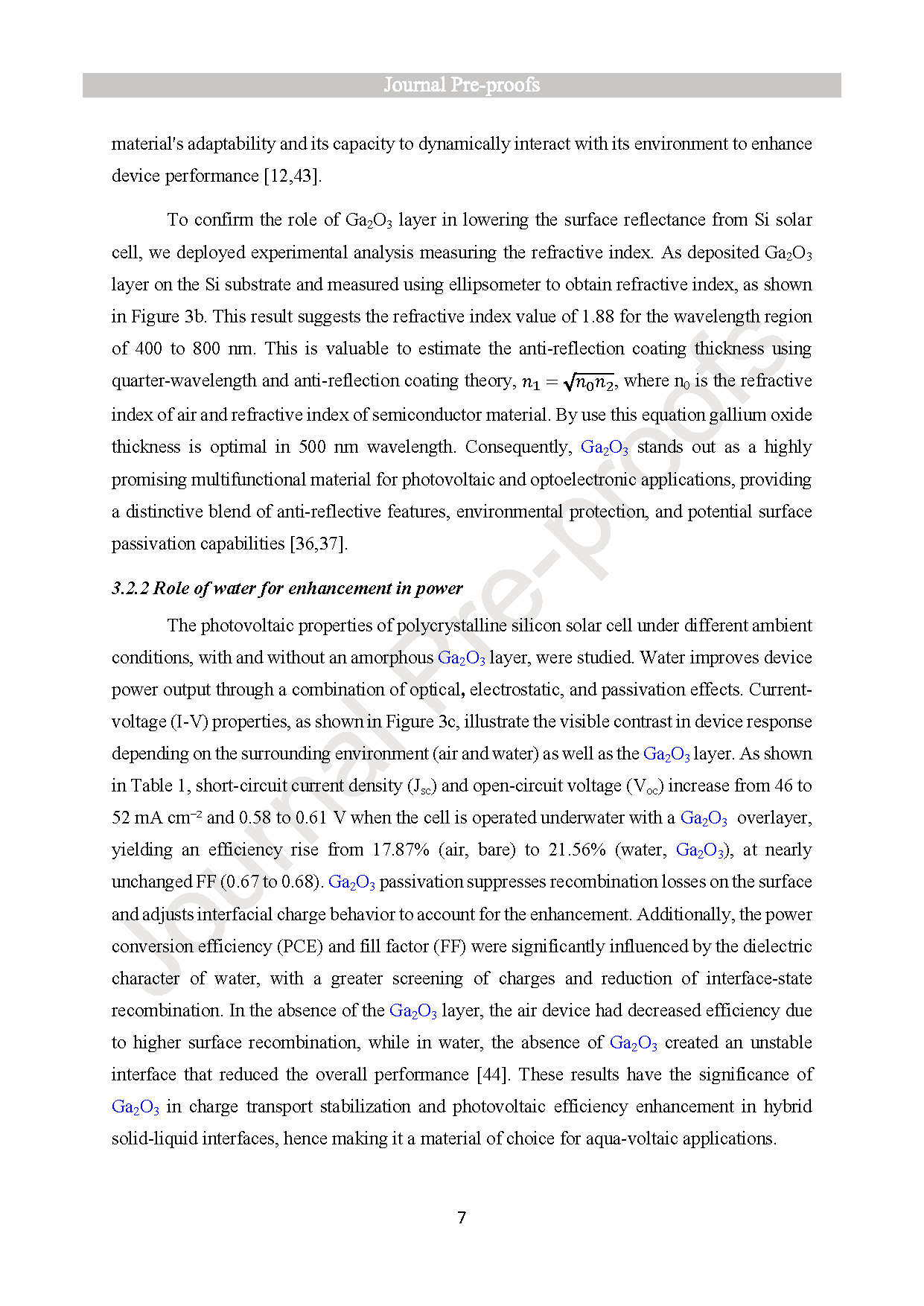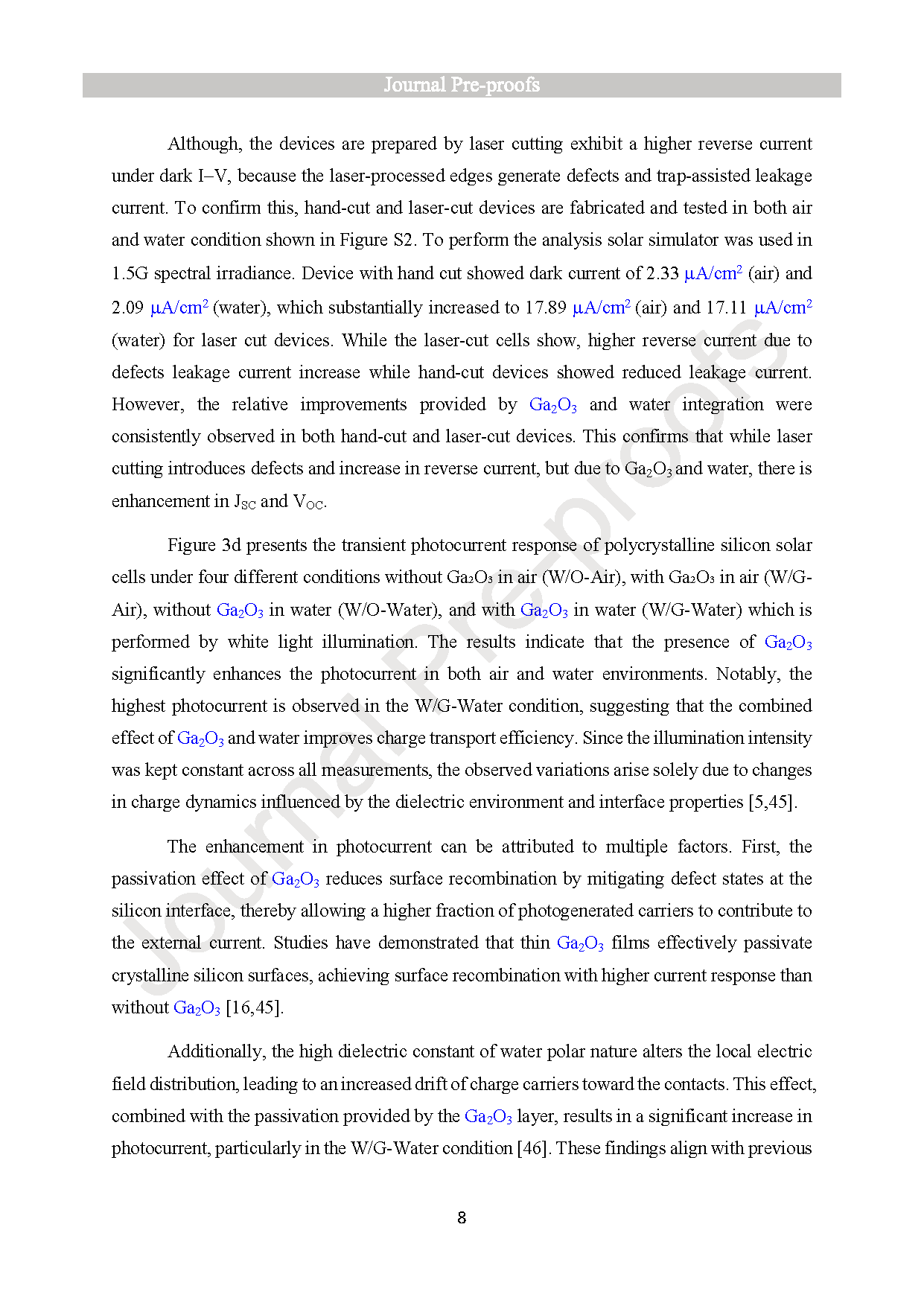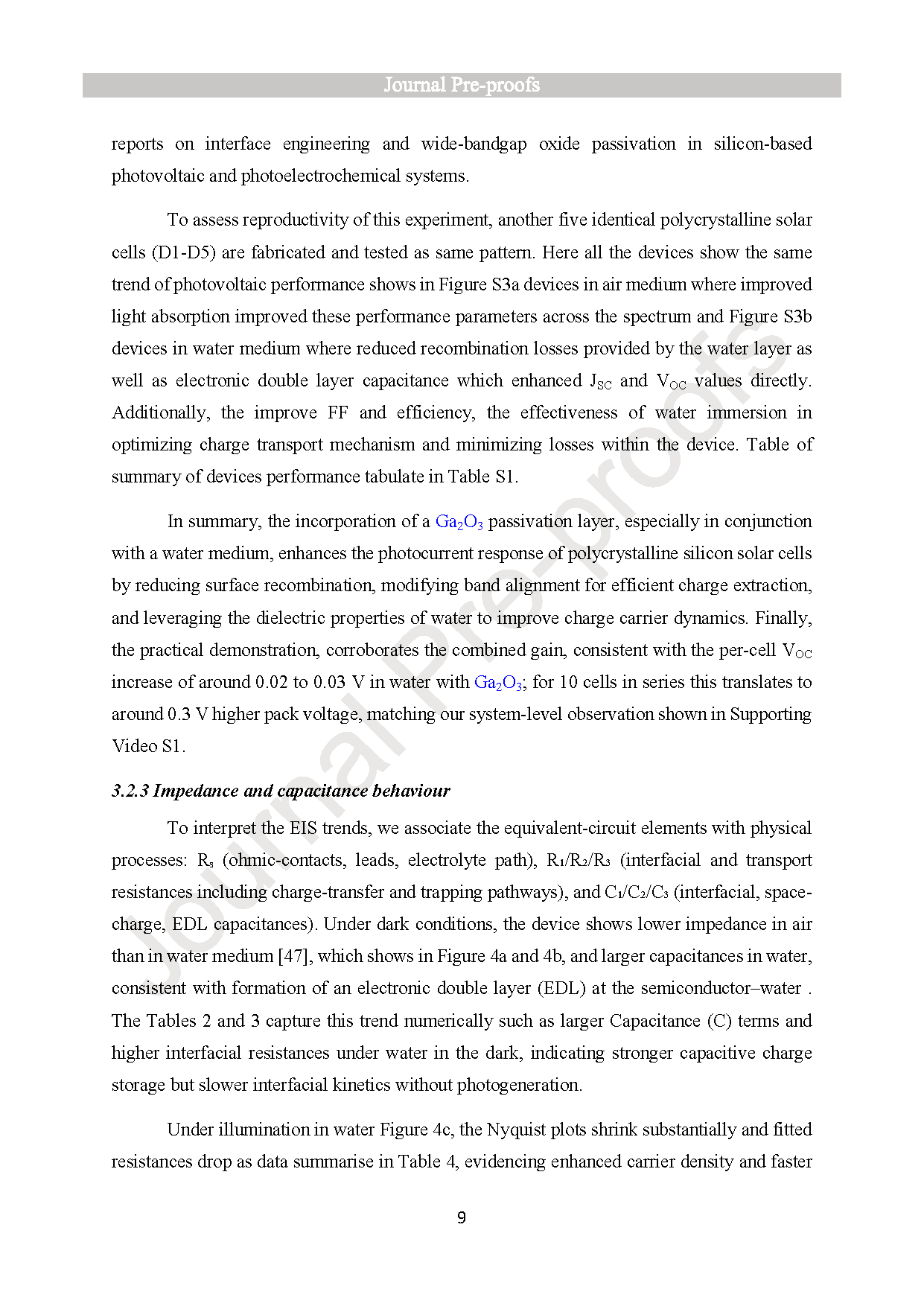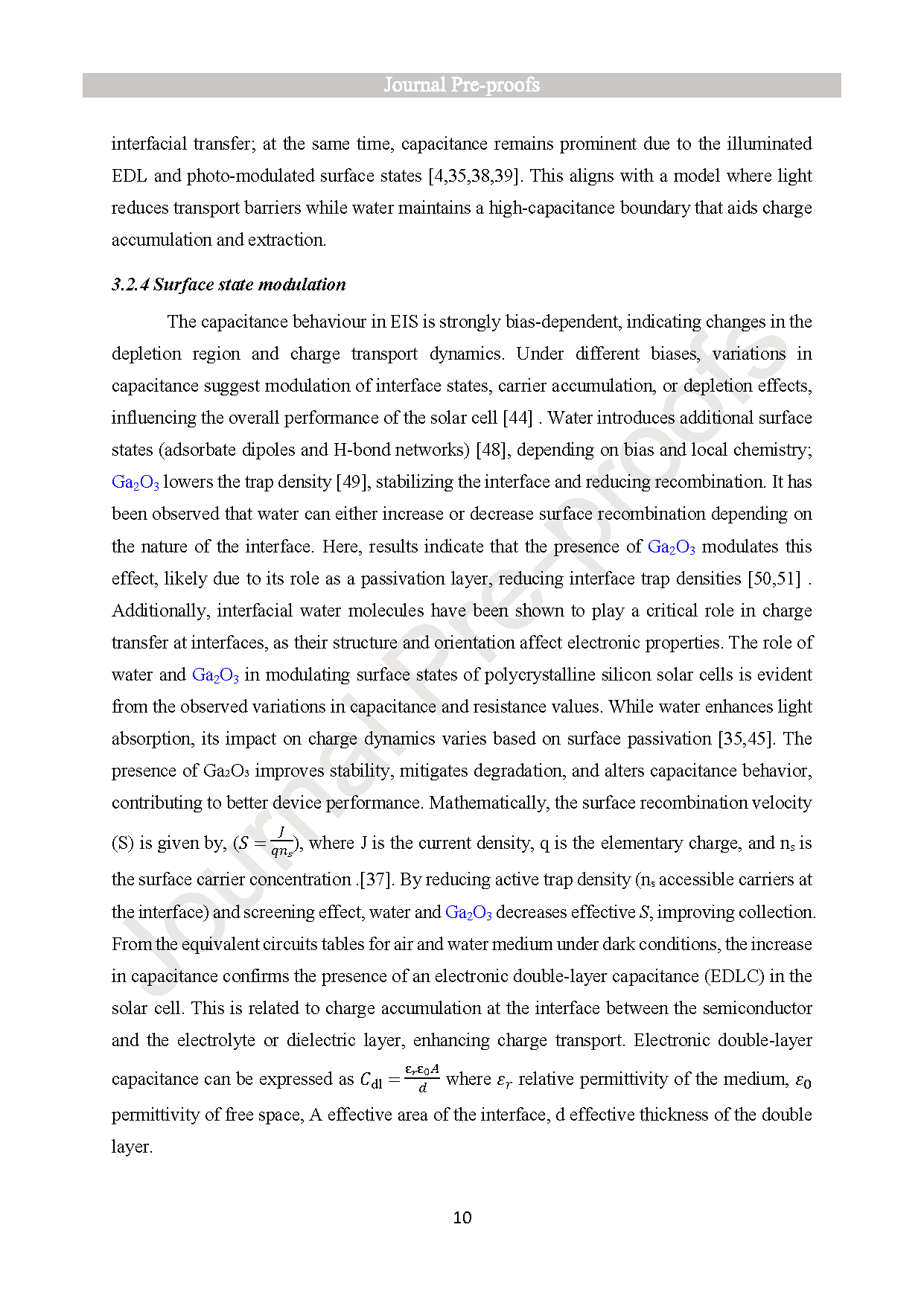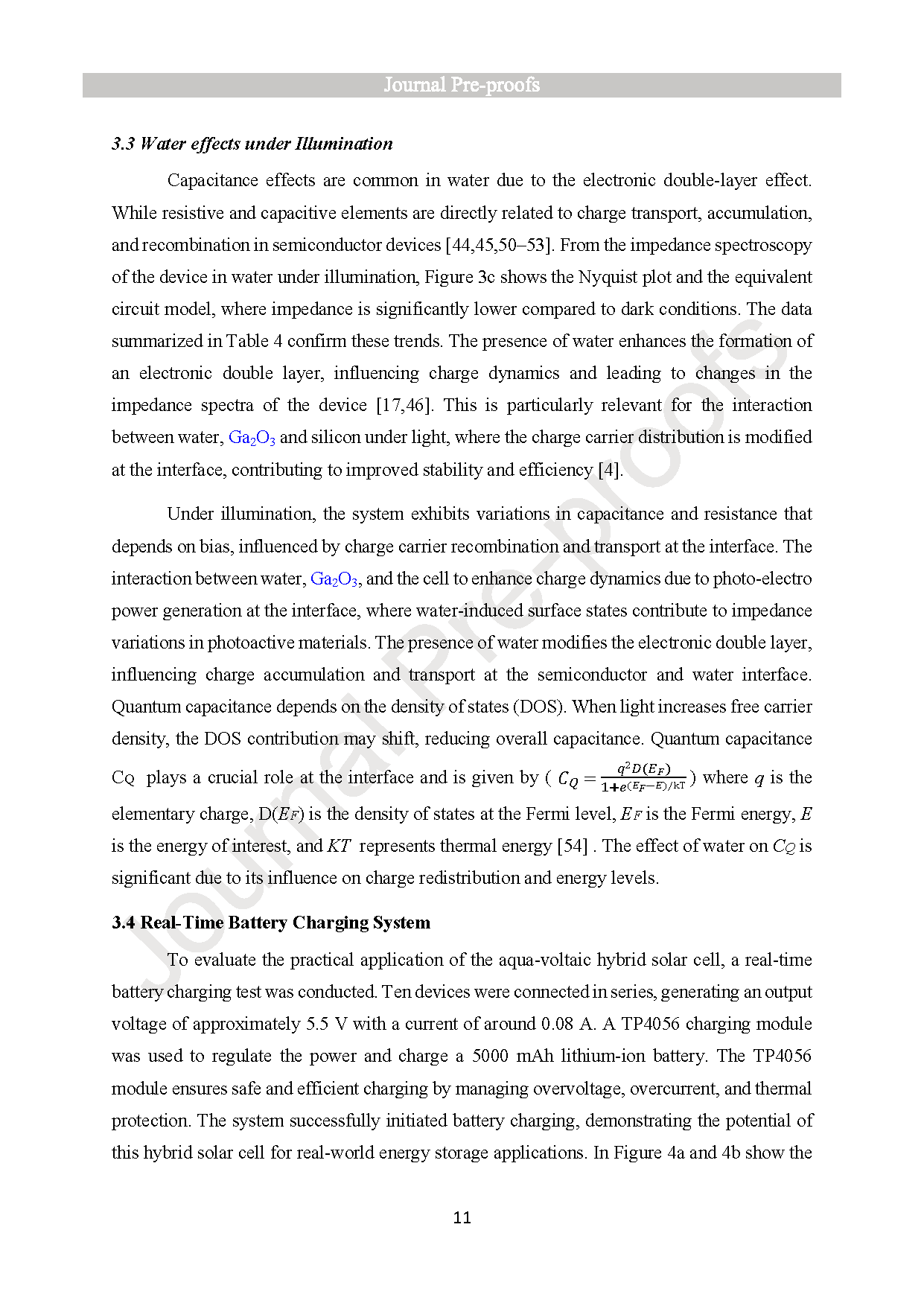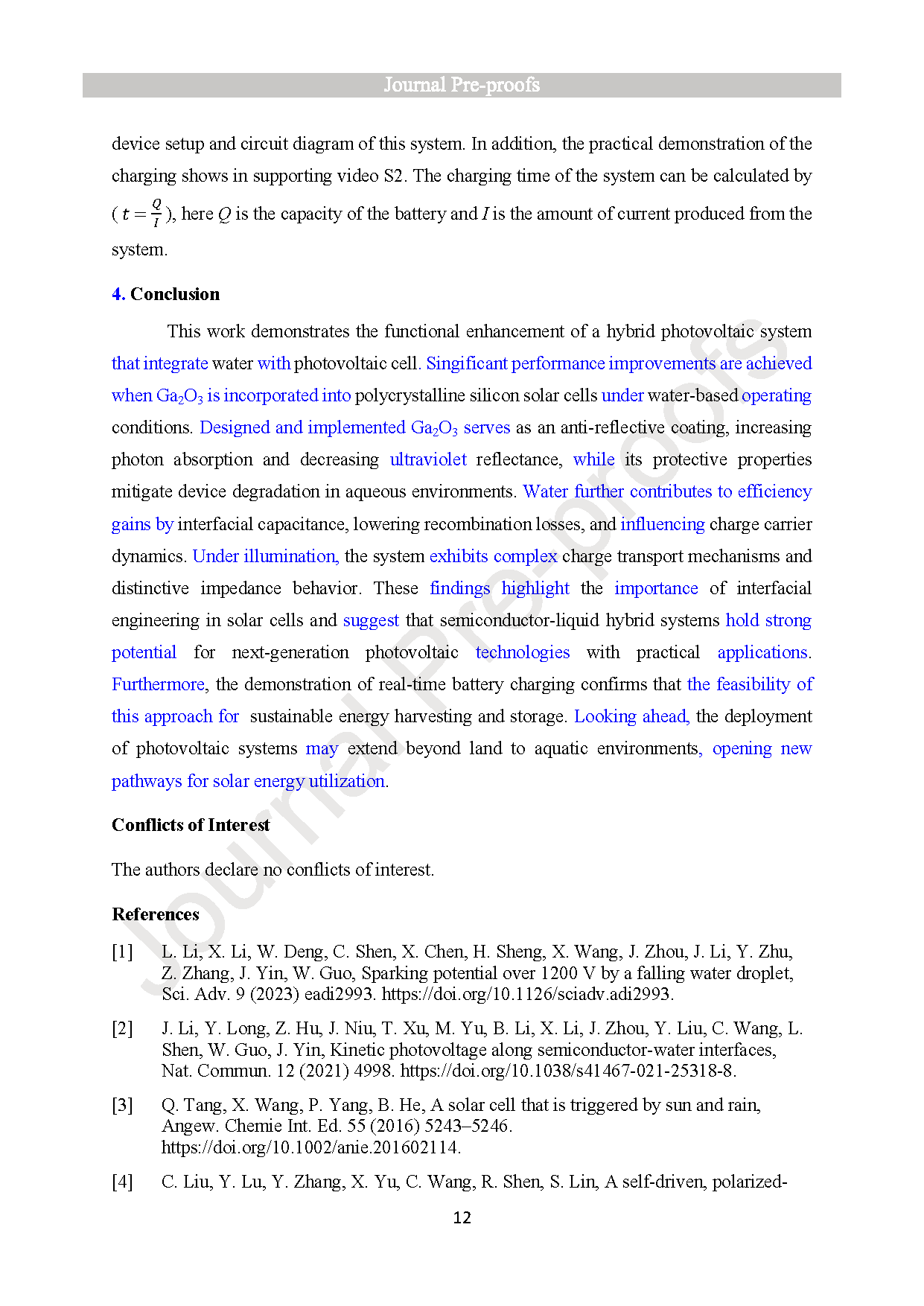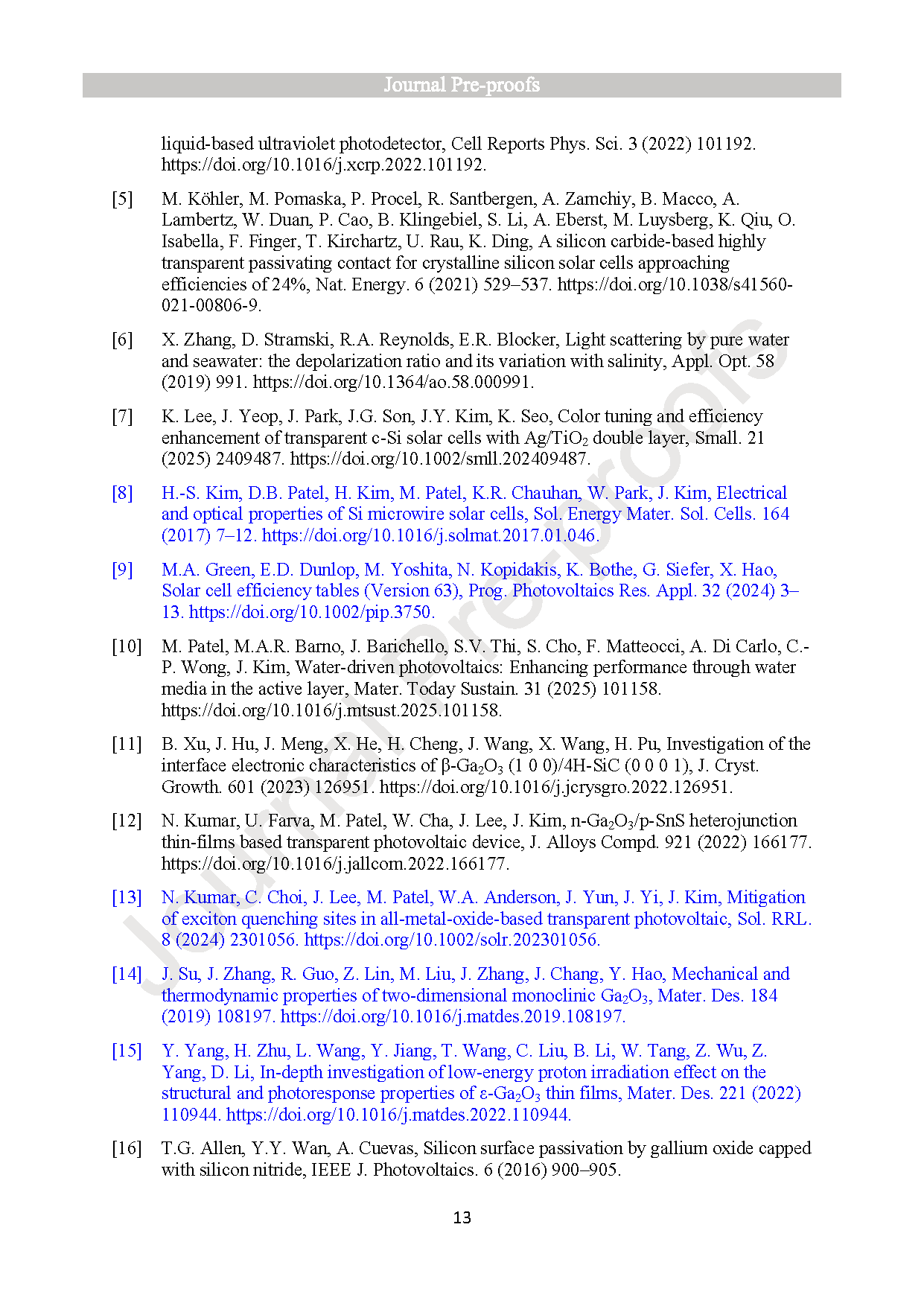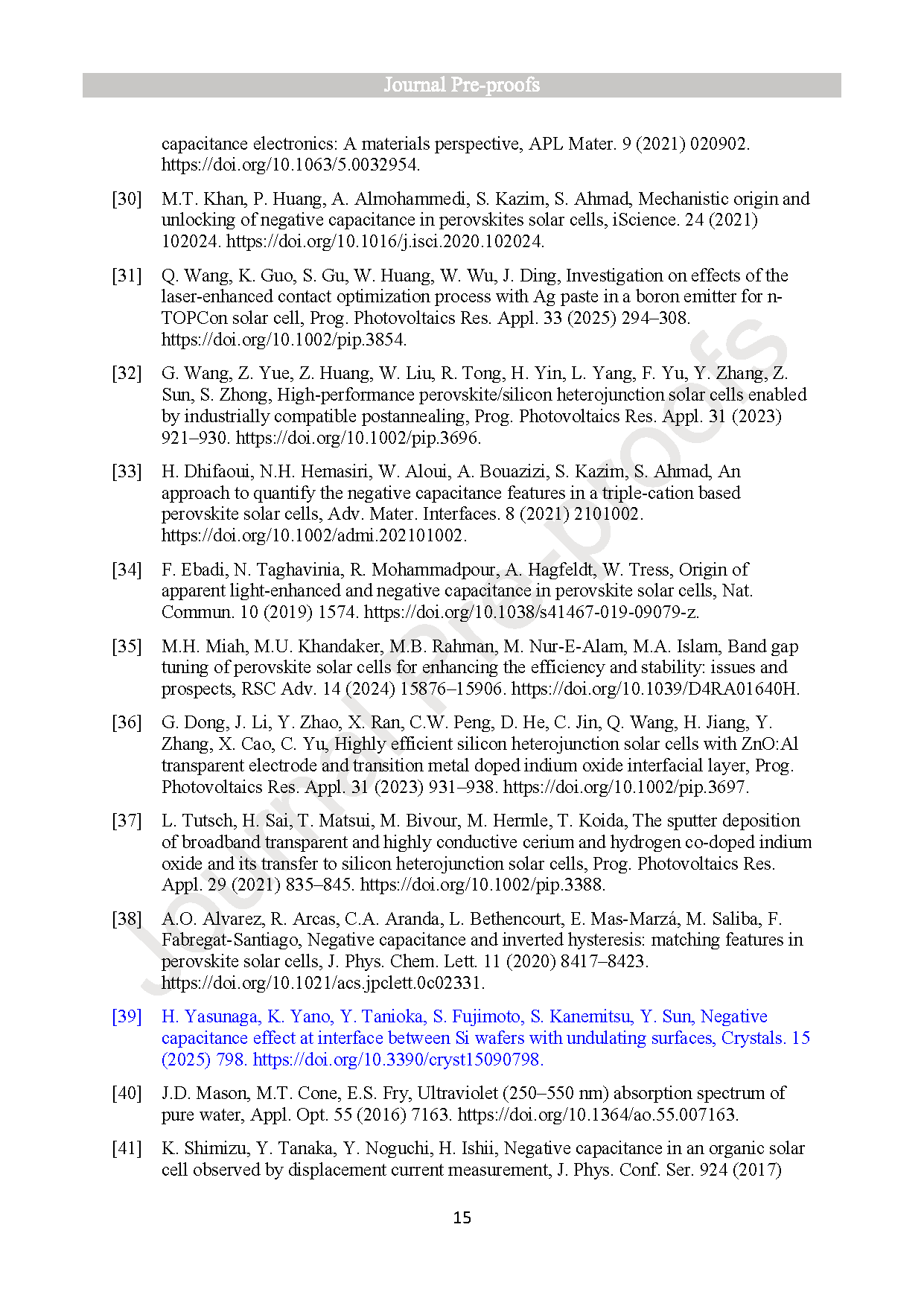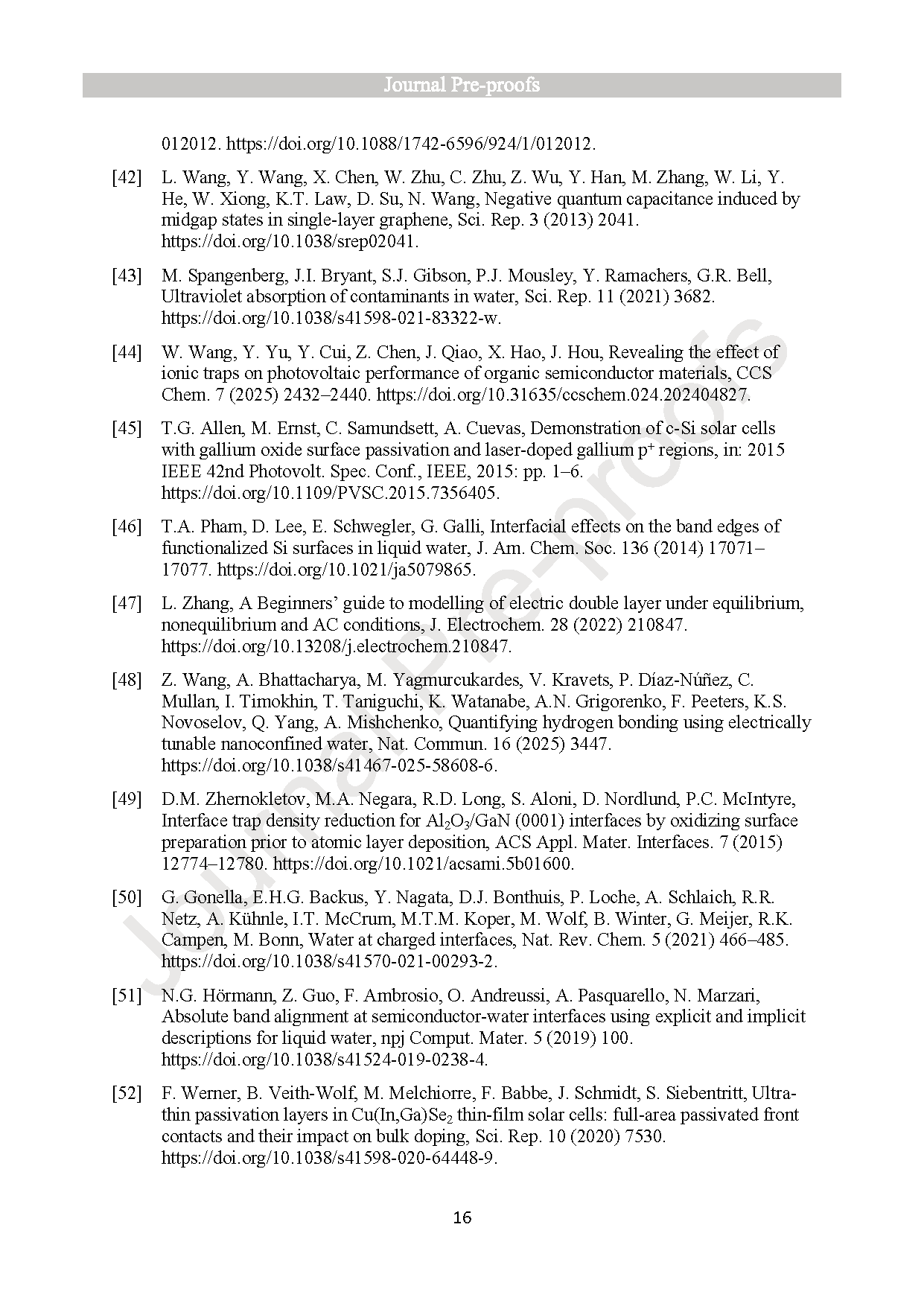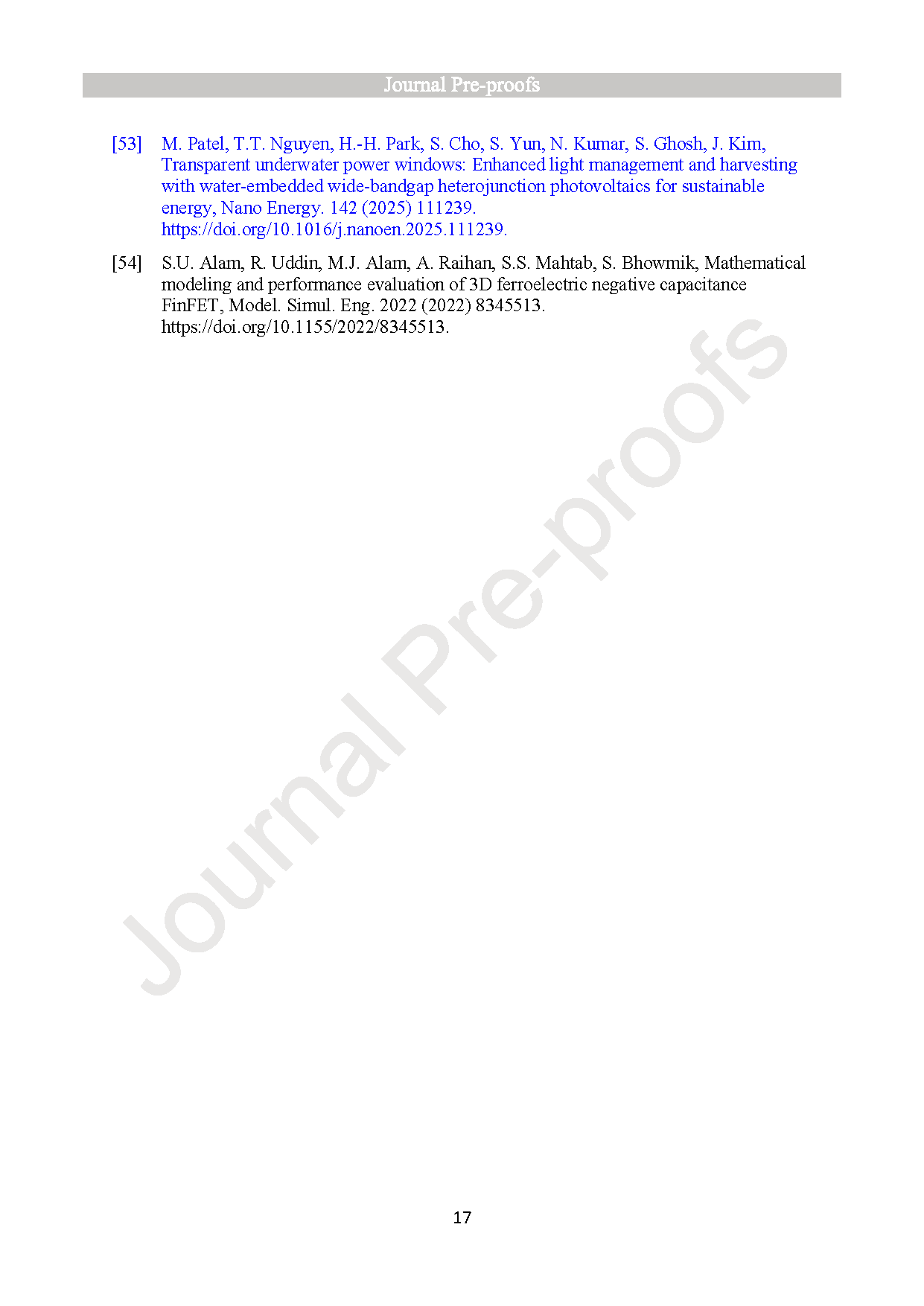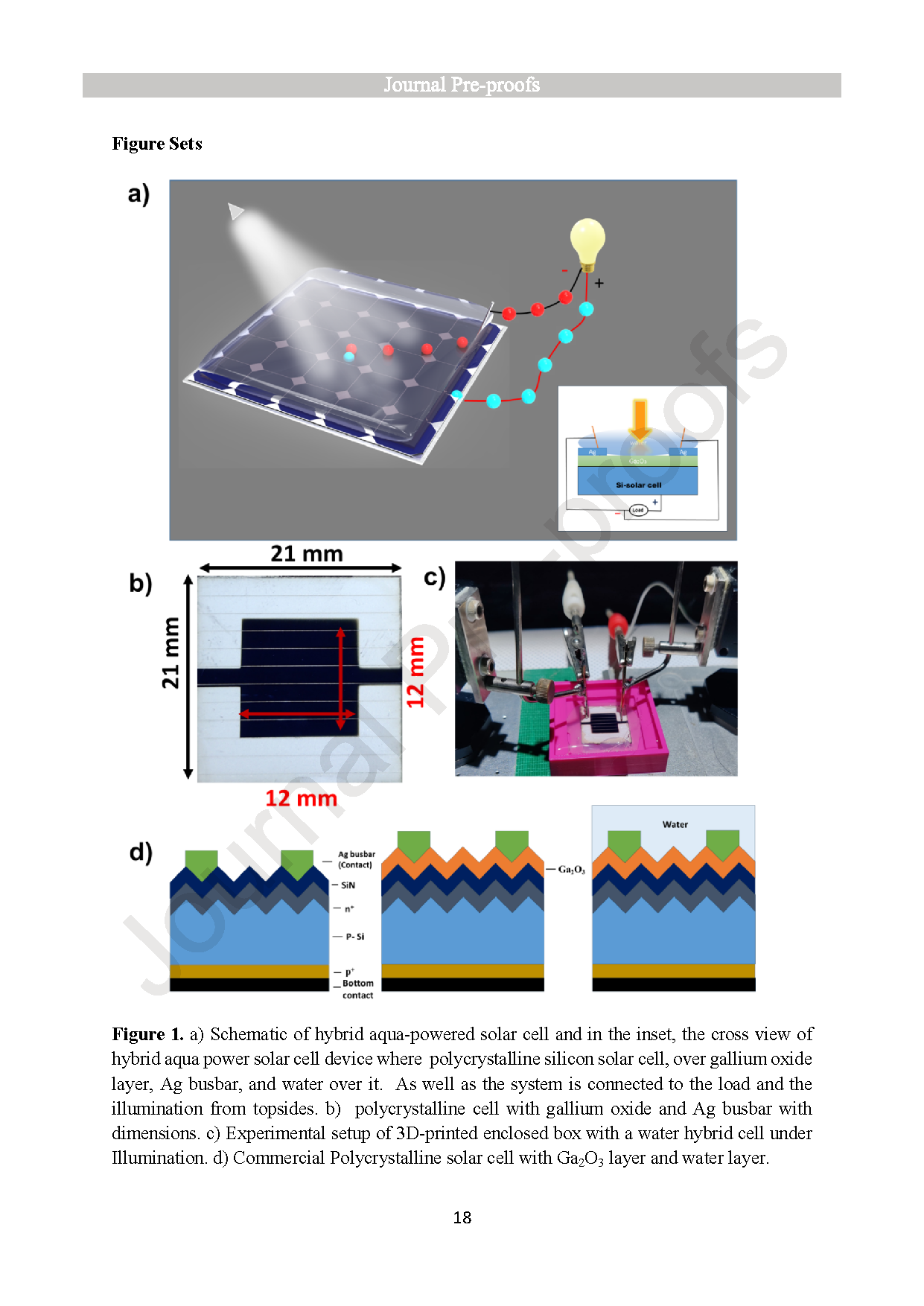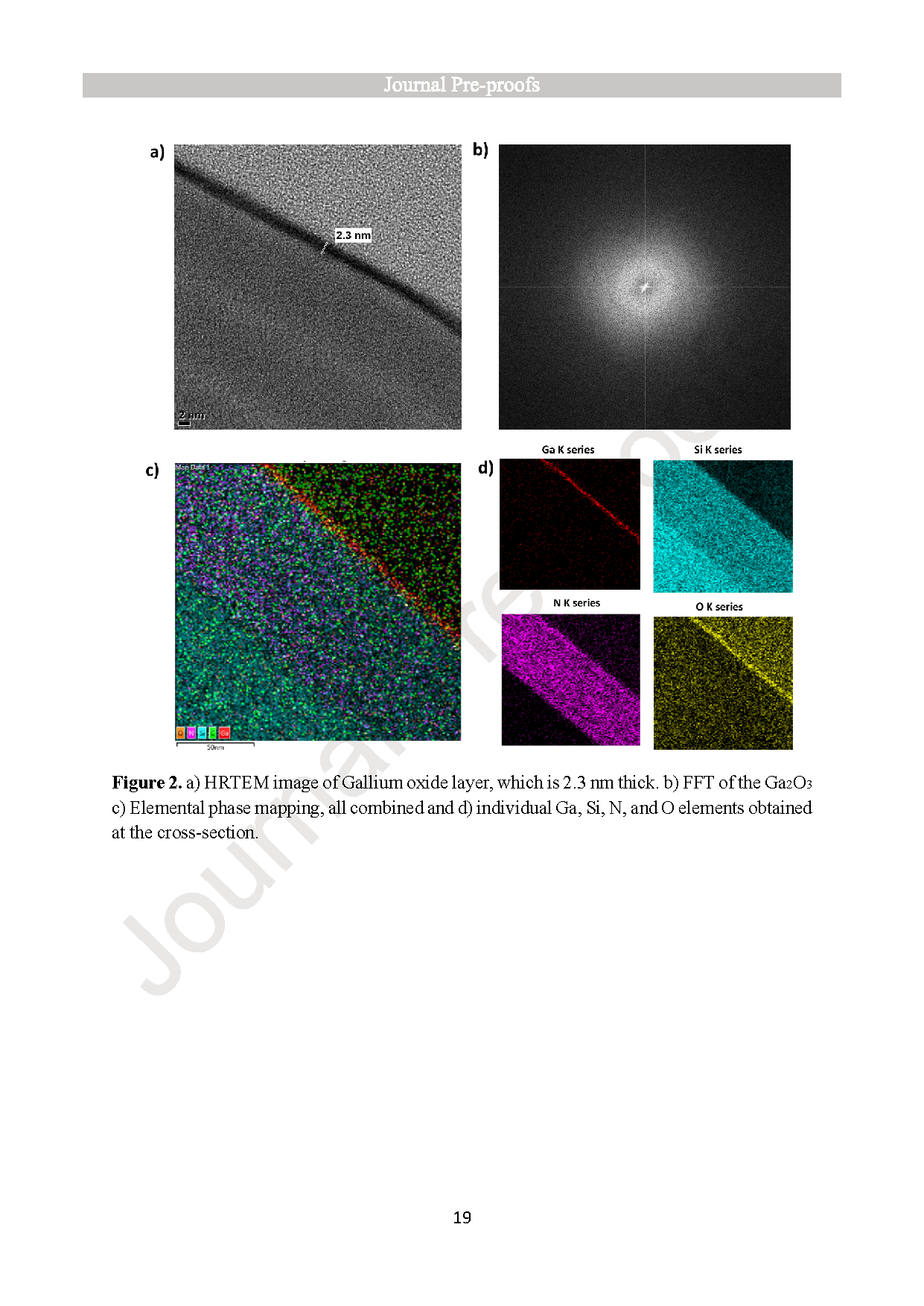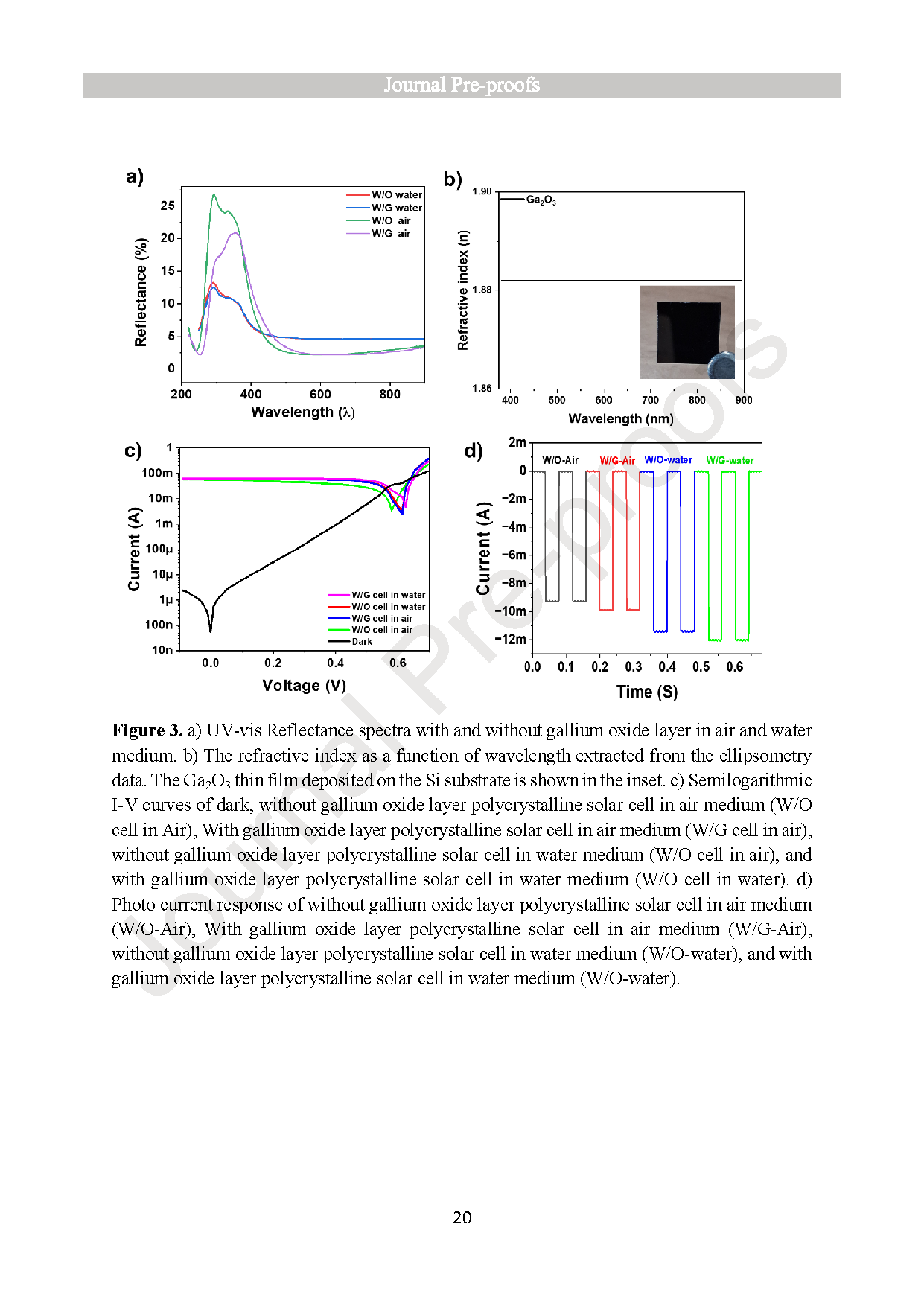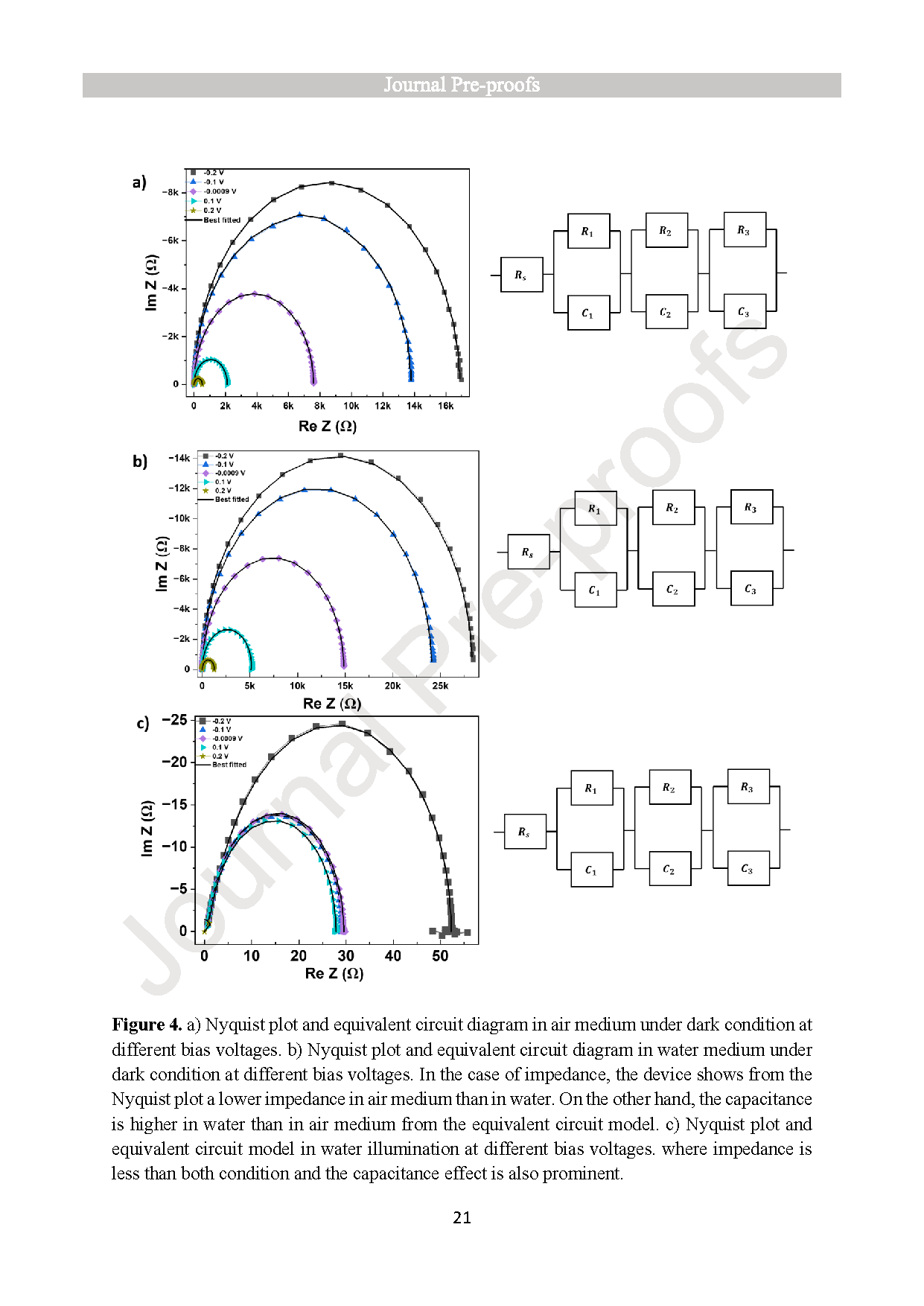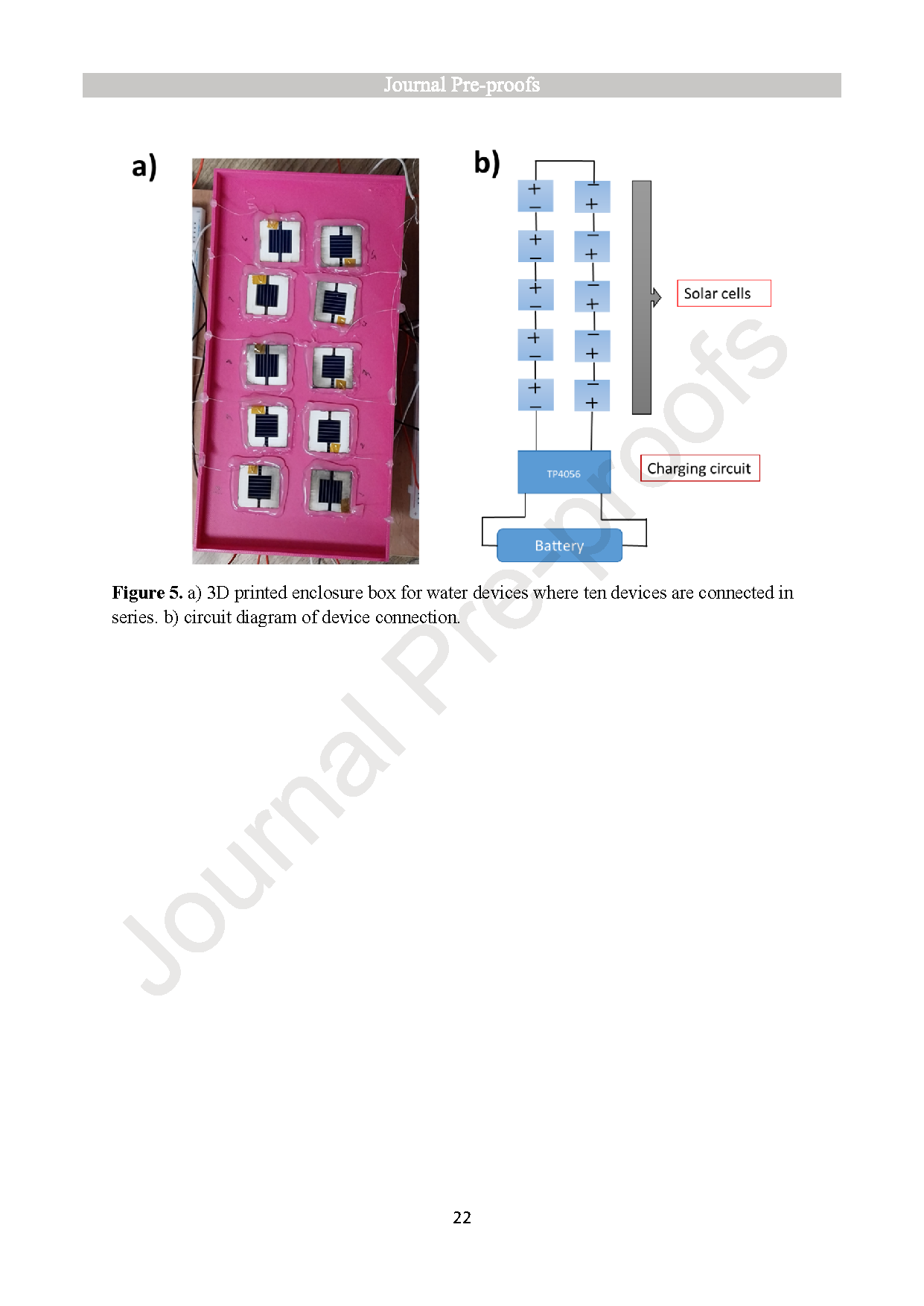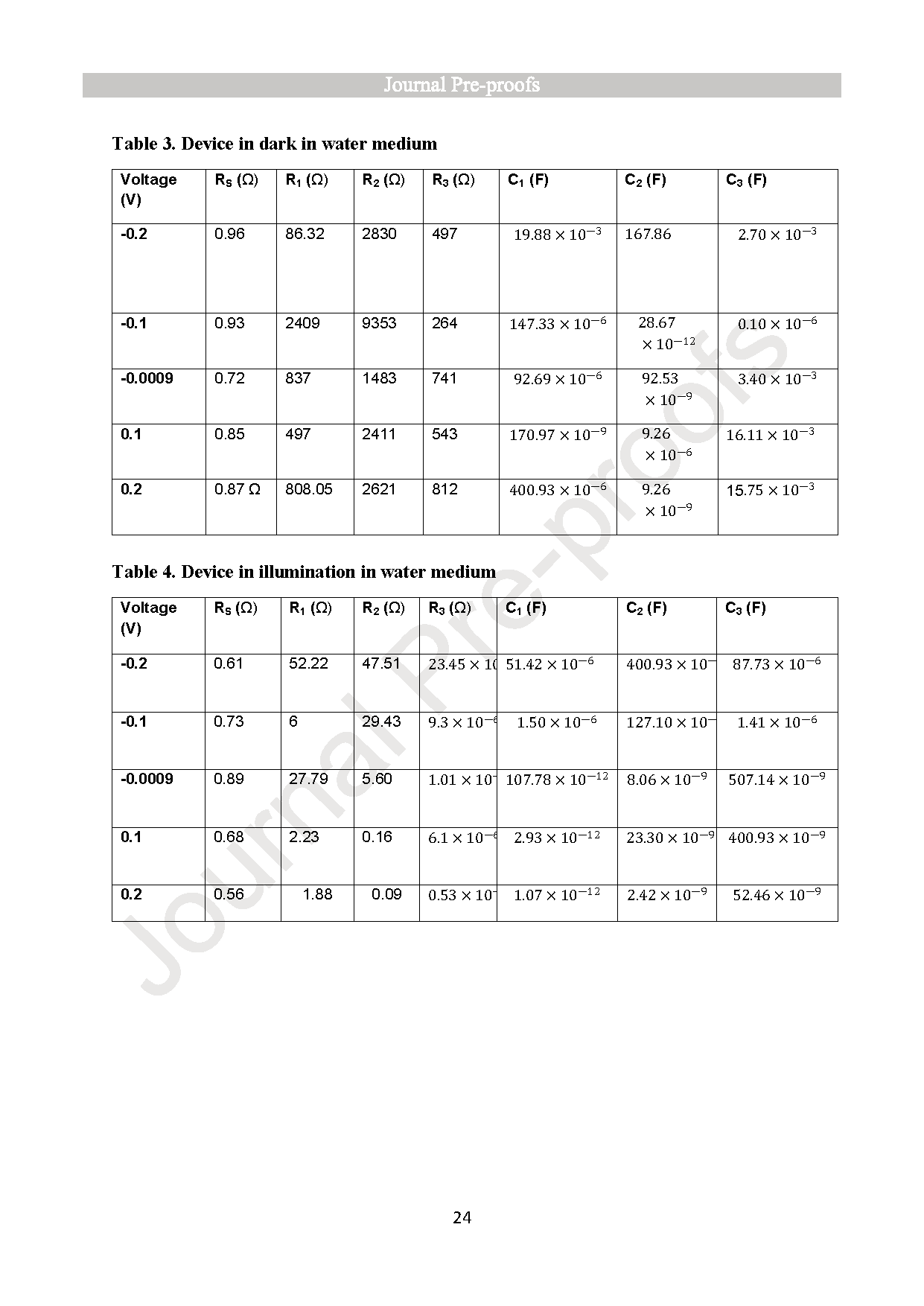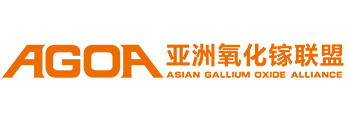

【International Papers】Aqua-powered hybrid solar cell using amorphous conformal Ga₂O₃ thin-film
日期:2025-10-16阅读:164
Researchers from the Incheon National University have published a dissertation titled "Aqua-powered hybrid solar cell using amorphous conformal Ga2O3 thin-film" in Materials & Design.
Background
Heterojunction interfaces–spanning solid–solid, solid–liquid and even solid–gas systems–exhibit diverse phenomena that underpin advances in electronics, photonics, and electrochemistry. In solid–solid semiconductor junctions, interfacial symmetry breaking creates a built-in electric field that governs key transport properties, such as rectification and drives photovoltage generation in devices like solar cells. By contrast, solid–liquid interfaces without dominant chemical reactions are largely shaped by ionic and molecular interactions, influencing processes such as water structuring, ionotronic devices operation, and aquavoltaic energy harvesting. Light illumination adds another layer of complexity, as photoexcited charges in the solid can modulate solid–liquid interactions. Continuous photovoltage generation at these interfaces typically requires dipole formation and dynamic charge redistribution.
Abstract
Clean energy generation is a primary demand to neutralise carbon emissions. Photovoltaics are the best candidates for clean energy. Water is a reliable and sufficient resource for future clean energy generation, as it can be used to enhance photovoltaic performance in a hybrid system. This study design and investigates a novel aqua-voltaic hybrid solar cell by integrating an ultra-thin gallium oxide layer (2.3 nm) with a polycrystalline silicon solar cell under water-based conditions. The amorphous Ga2O3 layer grown by sputtering enhances optical absorption, reduces surface reflectance in the ultraviolet (UV) region, and serves as a protective barrier against environmental degradation. Photovoltaic characterisations reveal an efficiency enhancement from 19.04 % to 21.56 % in Si solar cell when Ga2O3 and water introduced. Under illumination, electrochemical impedance spectroscopy (EIS) exhibits capacitance and resistance, indicating strong interfacial charge dynamics. These phenomena are attributed to electronic double-layer capacitance, quantum capacitance modulation, and charge redistribution at the Ga2O3-water interface. The results illustrate the dual role of water in enhancing charge transport while influencing surface-state interactions, leading to improved solar cell performance. This work provides insights into the interaction of semiconductor-liquid interfaces and offers a efficient hybrid energy harvesting technologies.
Highlights
● A new hybrid solar cell is demonstrated by combining silicon with an ultra-thin gallium oxide layer under water-based conditions.
● The system shows improved light absorption, reduced surface reflection, and protection from environmental damage.
● Solar cell efficiency increases from 19 % to over 21 % due to enhanced charge transport and interfacial effects at the semiconductor–water interface.
● This study reveals the dual role of water in boosting performance and offers a pathway to future clean energy harvesting technologies.
Conclusion
This work demonstrates the functional enhancement of a hybrid photovoltaic system that integrate water with photovoltaic cell. Singificant performance improvements are achieved when Ga2O3 is incorporated into polycrystalline silicon solar cells under water-based operating conditions. Designed and implemented Ga2O3 serves as an anti-reflective coating, increasing photon absorption and decreasing ultraviolet reflectance, while its protective properties mitigate device degradation in aqueous environments. Water further contributes to efficiency gains by interfacial capacitance, lowering recombination losses, and influencing charge carrier dynamics. Under illumination, the system exhibits complex charge transport mechanisms and distinctive impedance behavior. These findings highlight the importance of interfacial engineering in solar cells and suggest that semiconductor-liquid hybrid systems hold strong potential for next-generation photovoltaic technologies with practical applications. Furthermore, the demonstration of real-time battery charging confirms that the feasibility of this approach for sustainable energy harvesting and storage. Looking ahead, the deployment of photovoltaic systems may extend beyond land to aquatic environments, opening new pathways for solar energy utilization.
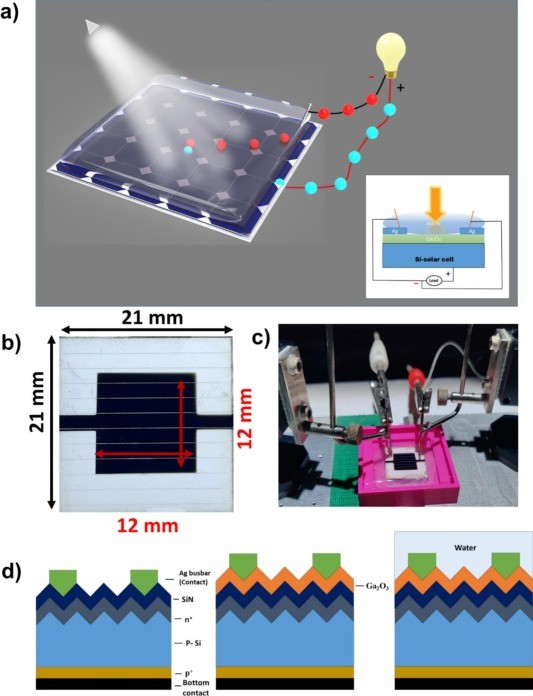
图1. a) 混合水动力太阳能电池示意图,插图为混合水动力太阳能电池装置的截面视图,其中包含多晶硅太阳能电池、氧化镓层、银汇流条及覆盖其上的水层。该系统连接负载并接受顶部光源照射。b) 带氧化镓层与银汇流条的多晶电池尺寸示意图。c) 3D 打印封闭箱体实验装置,内部放置水混合电池并接受光照。d) 商业化多晶太阳能电池,含 Ga2O3 层与水层结构。

图2. a) 厚度为 2.3nm 的氧化镓层的HRTEM图像。b) Ga2O3 的 FFT 图。c) 元素相图,所有元素组合图。d) 在横截面处获得的单独 Ga、Si、N 和 O 元素图。
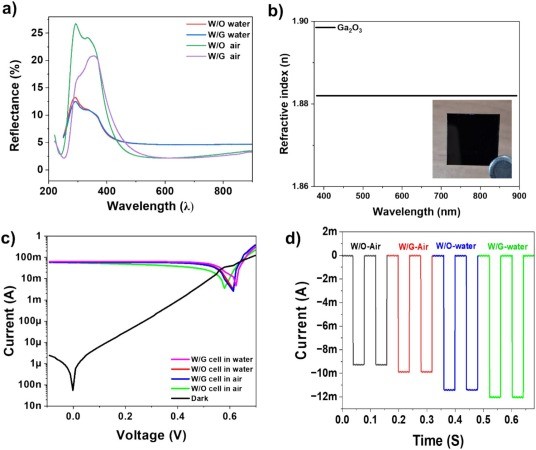
图3. a) 含/不含氧化镓层的紫外-可见反射率光谱(空气与水介质)。b) 椭圆偏振仪数据提取的波长-折射率关系曲线。插图展示了沉积于硅衬底上的 Ga2O3 薄膜。c) 半对数坐标下的暗电流-电压曲线:空气介质中无氧化镓层的多晶太阳能电池(W/O 电池在空气中), 含氧化镓层多晶太阳能电池在空气介质中的 I-V 曲线(W/G 电池在空气中),无氧化镓层多晶太阳能电池在水介质中的 I-V 曲线(W/O电池在空气中),含氧化镓层多晶太阳能电池在水介质中的 I-V 曲线(W/O 电池在水中)。d) 无氧化镓层多晶太阳能电池在空气介质中的光电流响应(W/O-Air), 含氧化镓层的多晶太阳能电池在空气介质中(W/G-Air),无氧化镓层的多晶太阳能电池在水介质中(W/O-water),以及含氧化镓层的多晶太阳能电池在水介质中(W/O-water)。
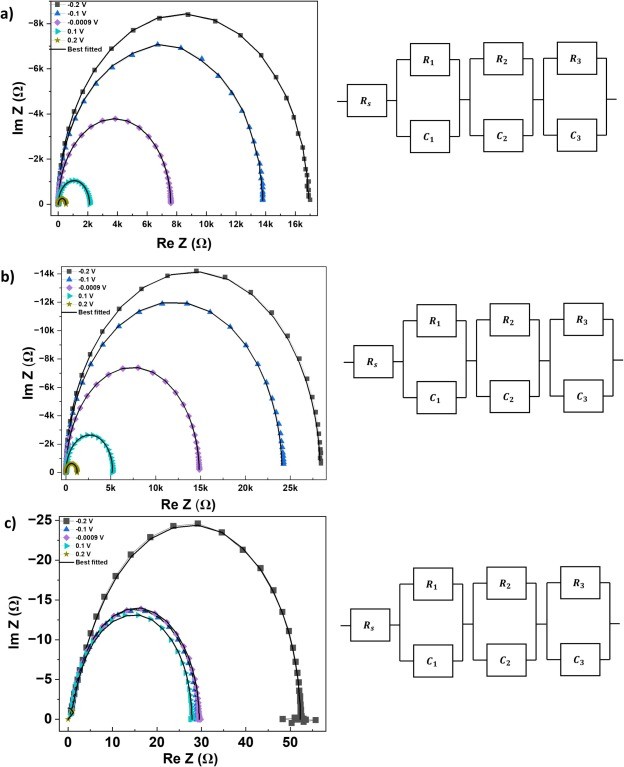
图4. a) 不同偏压下暗光条件下空气介质中的奈奎斯特图与等效电路图。B) 不同偏压下暗光条件下水介质中的奈奎斯特图与等效电路图。阻抗方面,奈奎斯特图显示该器件在空气介质中的阻抗低于水介质。另一方面,等效电路模型表明水介质中的电容值高于空气介质。c) 水中照明条件下不同偏压电压的奈奎斯特图与等效电路模型。此时阻抗低于两种条件下的数值,电容效应同样显著。
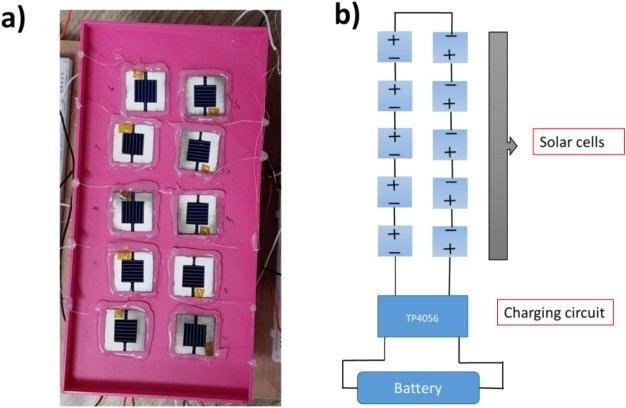
图5. a) 用于水处理设备的3D打印外壳箱,其中十台设备串联连接。b) 设备连接的电路图。
DOI:
doi.org/10.1016/j.matdes.2025.114754
